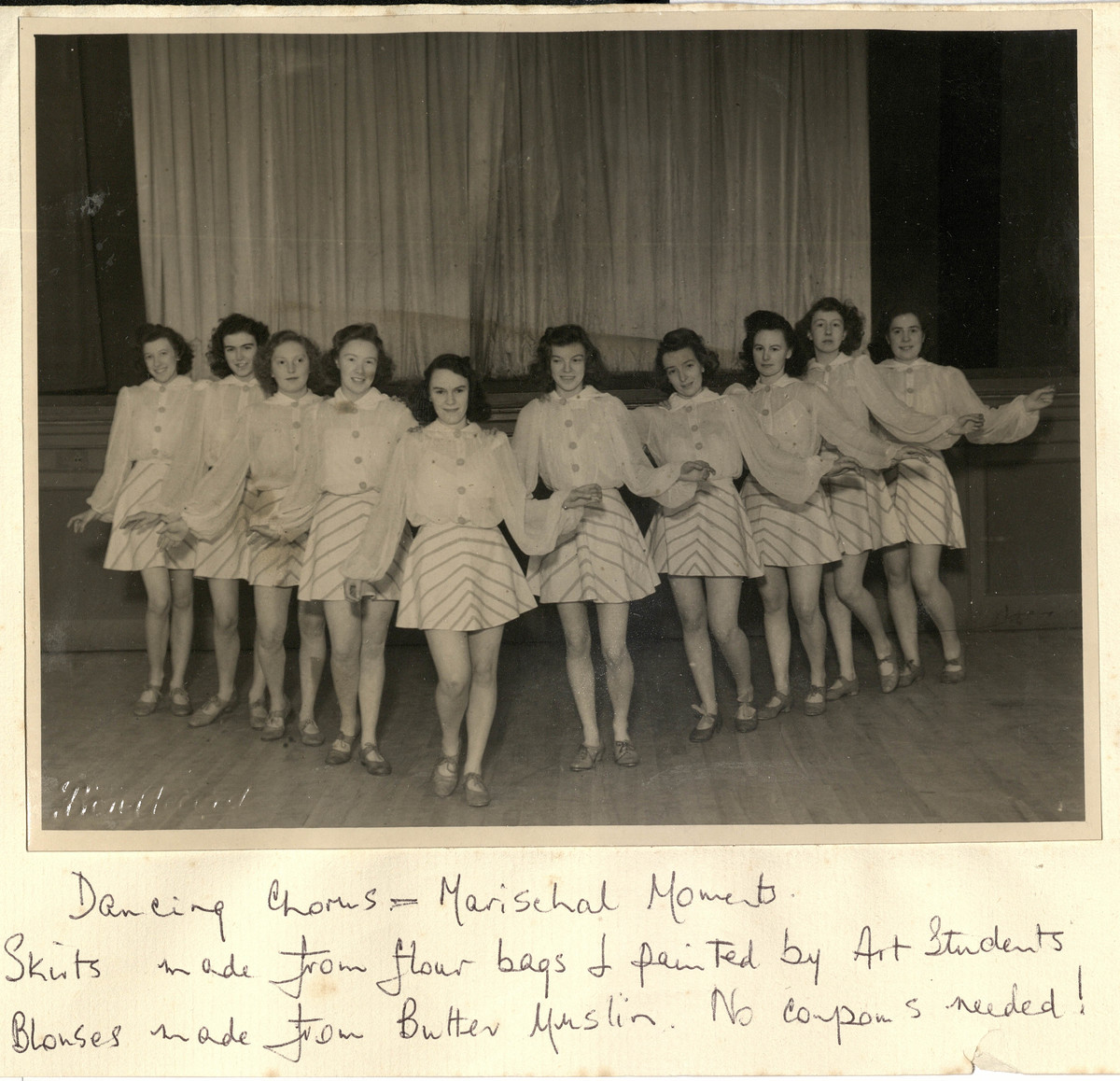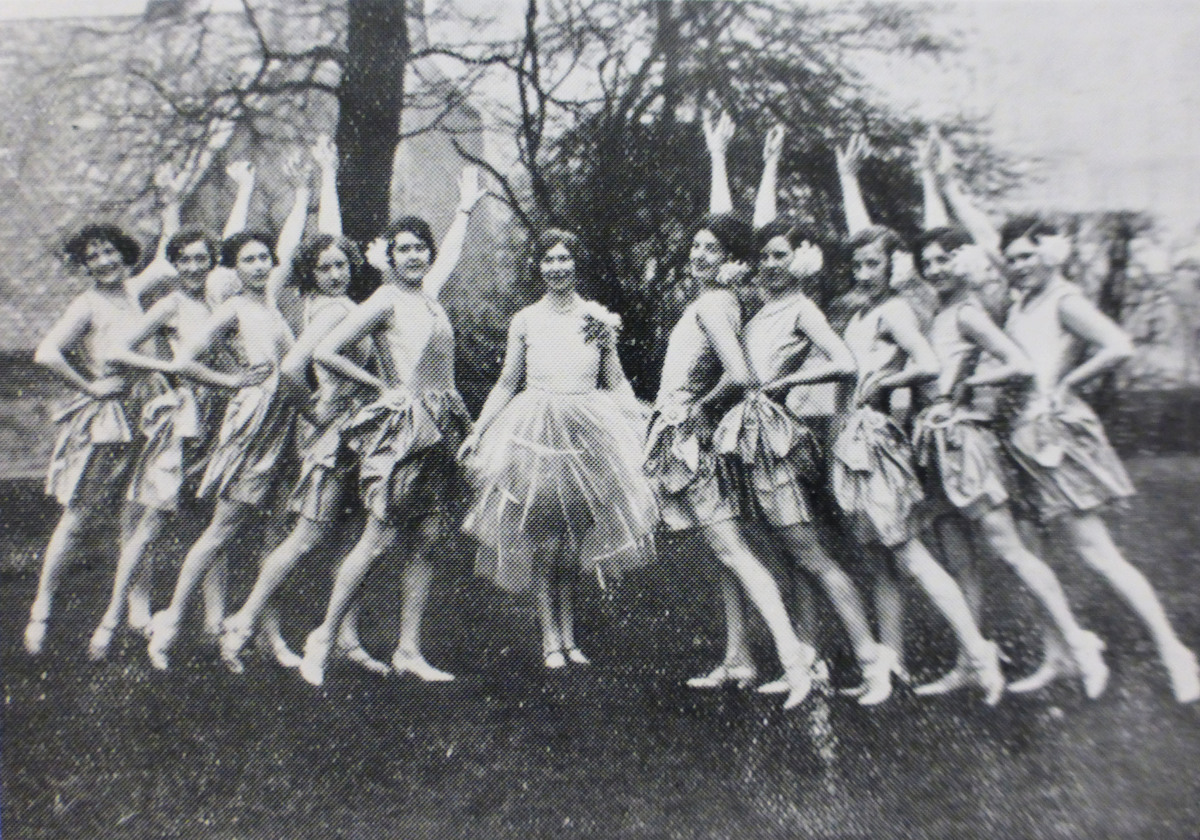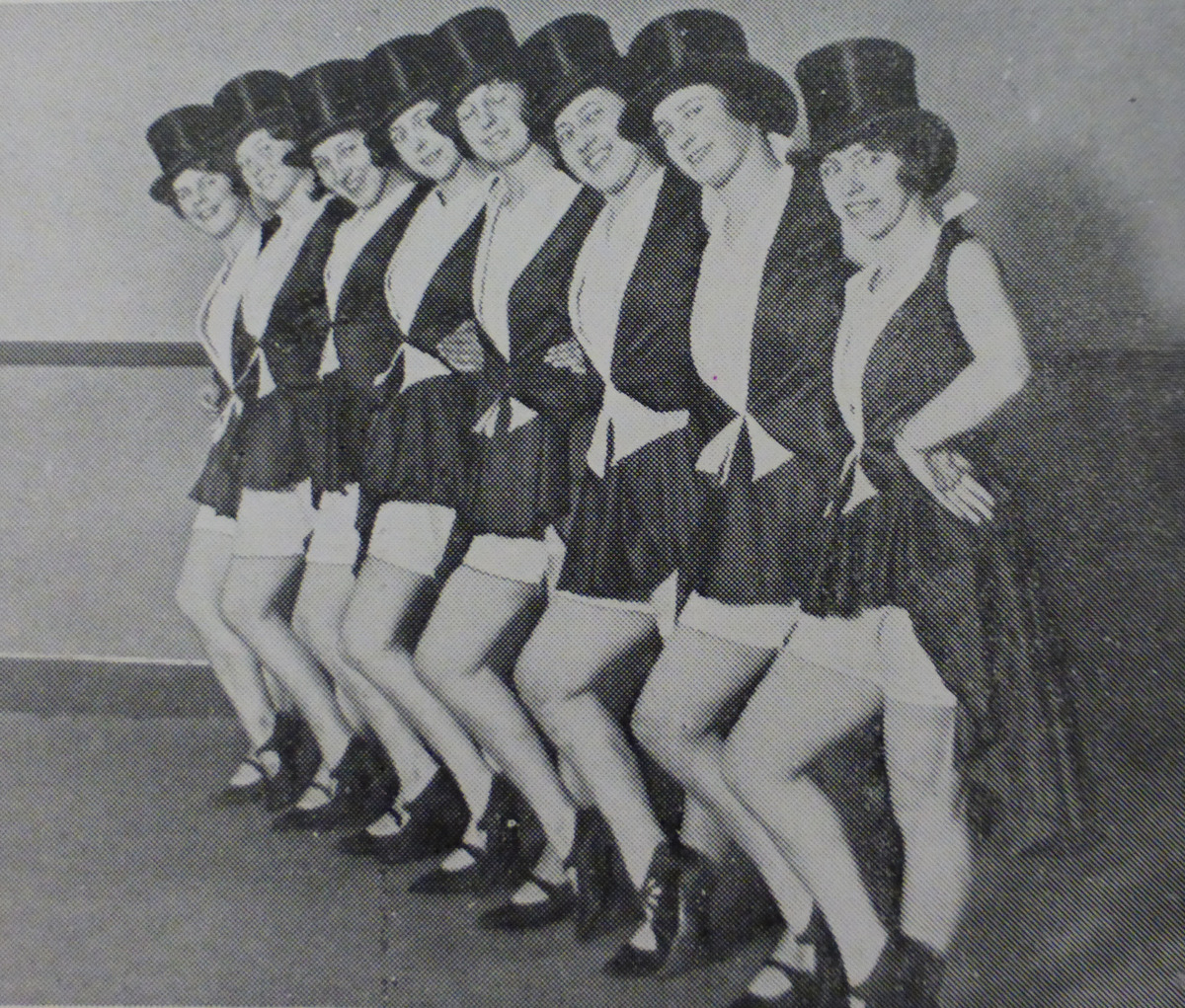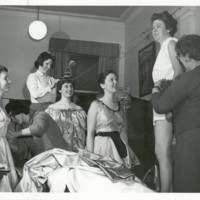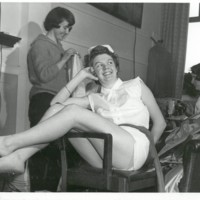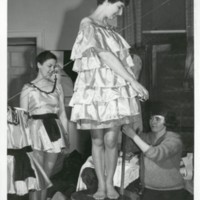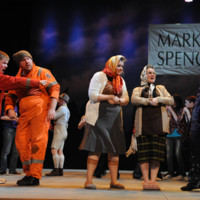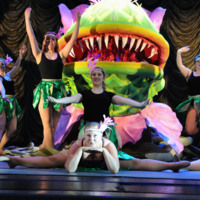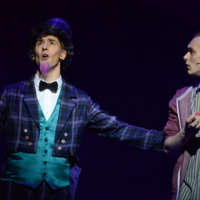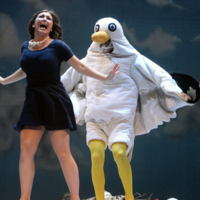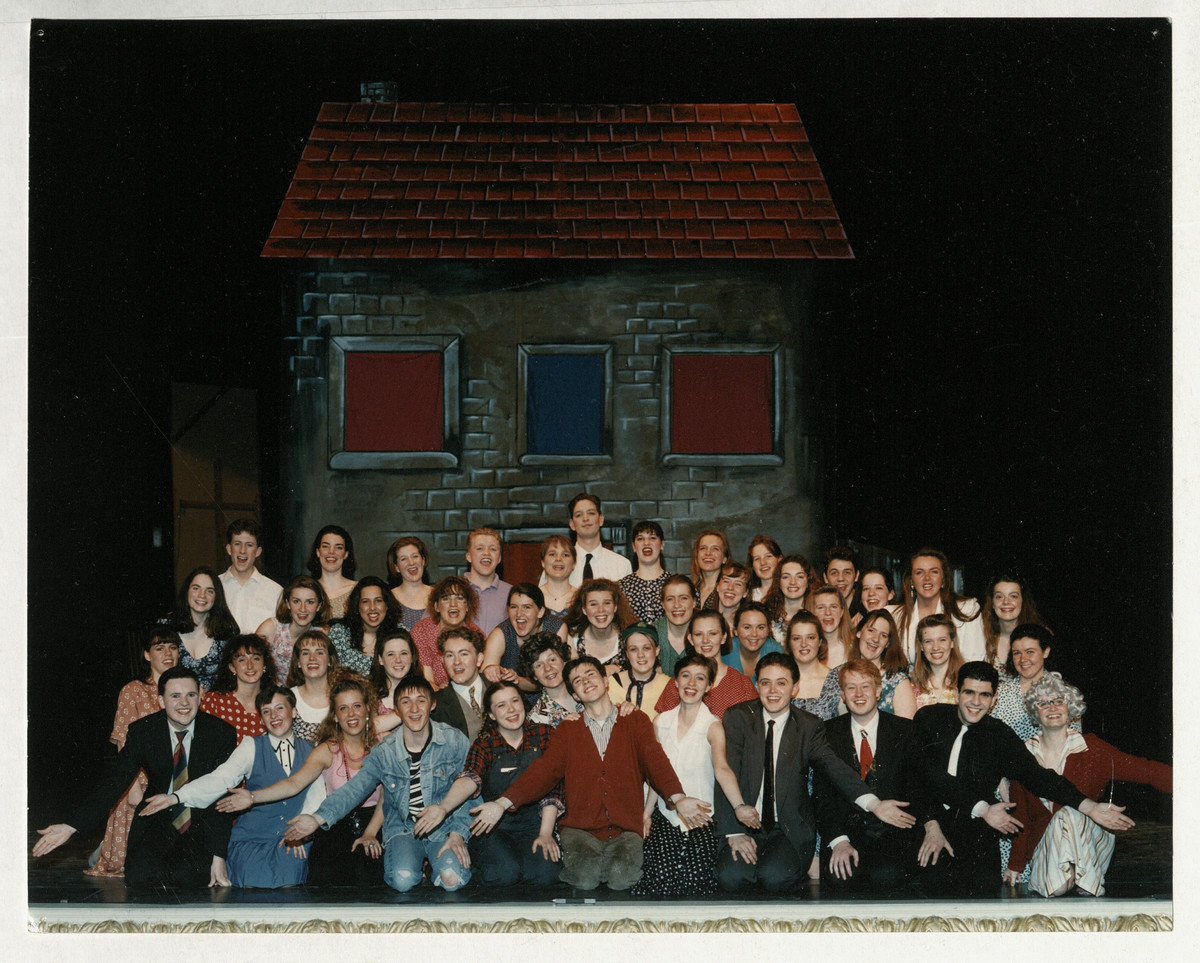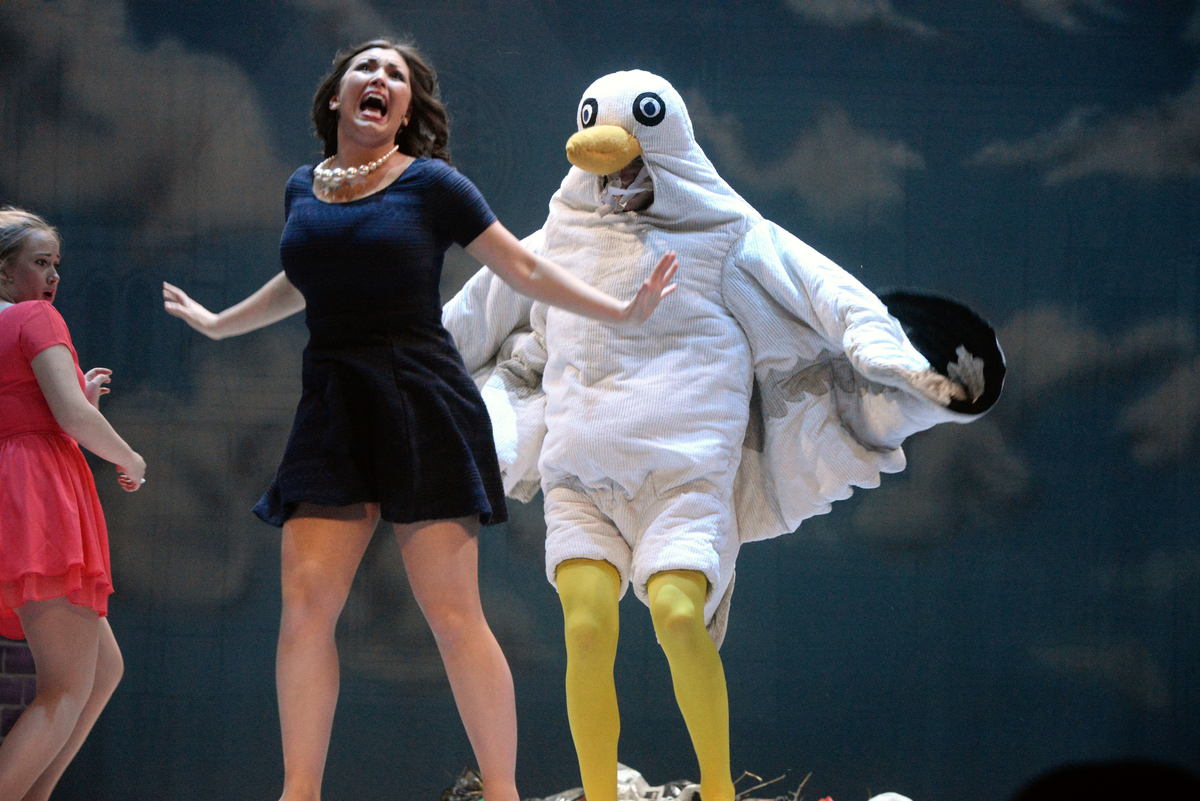The Dressing Room
"I think it was for 'Strike it Rich!' that we had a Busby Berkeley style number. I remember churning out the matching dresses while two wardrobe mistresses sewed sequins onto a jacket.
The great Peggy Walker came in and said 'What are you doing!?' She took a pot of glue and I learned a valuable lesson that day - she spread glue onto the jacket, sprinkled the sequins over, and in five minutes we had a sequinned jacket!"
Joy Crockart, Performer and Wardrobe Assistant 1979, remembering Peggy Walker
Makin’ costumes fur aa the loonies an’ quinies o’ a Student Show his nivver bin a skive. Oor richt handy dressmakers is aye some o’ the maist trauchled and tychauvin’ members o’ the Student Show team, aften makin’ muckle piles o’ costumes wi’ exactin’ an’ unco requirements, aa wi’ only a pucklie siller in the team piggy-bunkie.
Making costumes for all of the Student Show performers has never been an easy task. Often creating huge numbers of costumes with specific and unusual requirements, and on a tight budget, the skilled dressmakers are some of the hardest working members of the Student Show team.
While the first few Student Shows required costumes that were similar to those of an average play of the era, by the late 1920s the wardrobe department needed to up their game to match the ambitious nature of the songs and dances included in each show.
At this time, most shows contained multiple choruses, groups of 8-10 dancers and singers, who would all wear matching costumes. Indeed, 1929's revue show 'Northern Lights' had three female choruses alone, all appearing multiple times in different costumes for each number. All of this called for a huge amount of talent and ingenuity on the part of those behind the scenes.
Becoming Wardrobe Mistress
In this video, Sheila Sinclair, whose husband George Sinclair was Show's Stage Director, remembers how she stumbled into the role of Wardrobe Mistress one year.
Collections
Behind the scenes in heaven
These photos of the costume department (known as 'heaven' because it was on a high floor of Marischal college and was populated by 'angels') show the wardrobe assistants measuring and fitting performers with their outfits before the 1960 show, 'Folies Berserques'.
In the second photo, Pat Mellis can be seen relaxed and waiting for her fitting from wardrobe assistant Janet Hardie (who was Janet Warren at the time) on the left. In the third photo, Janet is making an adjustment to the dress of Chris McNeil, while Catherine Mackenzie patiently waits her turn.
Costumes these days
In more recent years, societal trends and Show’s return to the musical comedy format have meant far fewer choruses of uniformly dressed young women.
Now, each performer is dressed individually to suit their character, and it is expected that a Show will include certain stock characters, made recognisable by their costumes. For example, police officers, local Aberdonians dressed in tracksuits, and the elderly Nan 'n' Norma, who first appeared in the 1978 show 'Stage Fright', return year after year.
Costume-making has become a more specialised skill in order to produce wackier costumes. In 1969, not only did Wardrobe Mistress Moira Reed and her assistants have to make dresses for the cast of 'Kings and Quines', they also had to turn their hands to wig-making.
While perhaps not as tricky as making six lots of ten matching costumes like in the old days, costume design is still one of the most demanding behind-the-scenes jobs, and is critical to the Show’s success each year.




